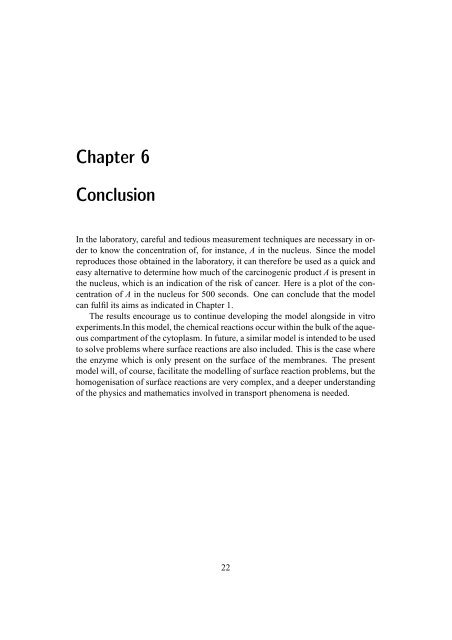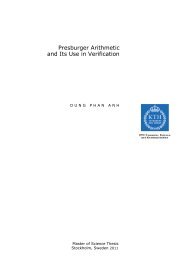FEMLAB - KTH
FEMLAB - KTH
FEMLAB - KTH
You also want an ePaper? Increase the reach of your titles
YUMPU automatically turns print PDFs into web optimized ePapers that Google loves.
Chapter 6<br />
Conclusion<br />
In the laboratory, careful and tedious measurement techniques are necessary in order<br />
to know the concentration of, for instance, A in the nucleus. Since the model<br />
reproduces those obtained in the laboratory, it can therefore be used as a quick and<br />
easy alternative to determine how much of the carcinogenic product A is present in<br />
the nucleus, which is an indication of the risk of cancer. Here is a plot of the concentration<br />
of A in the nucleus for 500 seconds. One can conclude that the model<br />
can fulfil its aims as indicated in Chapter 1.<br />
The results encourage us to continue developing the model alongside in vitro<br />
experiments.In this model, the chemical reactions occur within the bulk of the aqueous<br />
compartment of the cytoplasm. In future, a similar model is intended to be used<br />
to solve problems where surface reactions are also included. This is the case where<br />
the enzyme which is only present on the surface of the membranes. The present<br />
model will, of course, facilitate the modelling of surface reaction problems, but the<br />
homogenisation of surface reactions are very complex, and a deeper understanding<br />
of the physics and mathematics involved in transport phenomena is needed.<br />
22

















